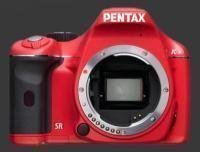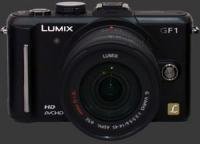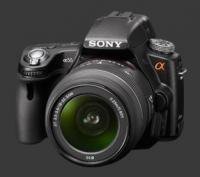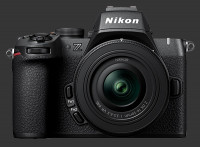The Future Of Digital Cameras - Part 2
News
2010.09.29

Last time on Neocamera BLOG we looked at what drives advancements among fixed-lens cameras, where their biggest challenges to overcome are image quality in low-light and speed. This time we look at the realm of Interchangeable Lens Cameras (ILC).
For years and years, the only ILCs available were DSLRs, all modeled after the equivalent from the film-days, the Single Lens Reflex. This approach uses a single lens with a swinging mirror to change the light path so that either the image sensor or the viewfinder sees the image.
Eventually the advent of full-time Live-View meant that an optical viewfinder could be considered optional. So, new cameras were designed without the mirror and therefore without the optical reflex viewfinder. This brought about the cameras known as SLD, which stands for Single Lens Display. The goal of such cameras is to bring high quality images into a smaller form-factor. Using the same sensor as those used in most DSLRs but without the bulky penta-prism or penta-mirror, they are indeed achieving that goal. A change in the distance between the camera sensor and lens also allows lenses to be made smaller than their DSLR equivalent.
 The presently-accepted compromise of SLD cameras, other than the lack of an optical reflex viewfinder, is the loss of phase-detection autofocus. Phase detection autofocus is considered the fastest way to autofocus and requires a light path to dedicated sensors. Normally these sensors are placed inside the viewfinder chamber and they receive light when an SLR's mirror is reflecting light away from the lens. Current SLD offerings therefore all use contrast-detect autofocus instead. This system is very flexible because it can be done with any part of the sensor and can made to recognize subjects and patterns such as faces. The downside is that it remains slower than phase-detect autofocus. So while SLD cameras, sometimes known as Mirrorless cameras, have managed to produce image quality on par with entry-level DSLRs, they have not caught up in terms of speed. We are certain that manufacturers are working on it. At first we had only Olympus and Panasonic as the producers of mirrorless ILCs, but Samsung and Sony followed soon after. The biggest players, Canon and Nikon, as well as Pentax, remain quiet for now.
The presently-accepted compromise of SLD cameras, other than the lack of an optical reflex viewfinder, is the loss of phase-detection autofocus. Phase detection autofocus is considered the fastest way to autofocus and requires a light path to dedicated sensors. Normally these sensors are placed inside the viewfinder chamber and they receive light when an SLR's mirror is reflecting light away from the lens. Current SLD offerings therefore all use contrast-detect autofocus instead. This system is very flexible because it can be done with any part of the sensor and can made to recognize subjects and patterns such as faces. The downside is that it remains slower than phase-detect autofocus. So while SLD cameras, sometimes known as Mirrorless cameras, have managed to produce image quality on par with entry-level DSLRs, they have not caught up in terms of speed. We are certain that manufacturers are working on it. At first we had only Olympus and Panasonic as the producers of mirrorless ILCs, but Samsung and Sony followed soon after. The biggest players, Canon and Nikon, as well as Pentax, remain quiet for now.
Enter Sony, again. While the first models from Sony, called NEX, fell in the same mold as ones from Panasonic and Olympus, the second wave was something quite different. Sony calls them SLT which stands for Single Lens Translucent. These cameras have a semi-reflective mirror which lets light reach the image sensor and the phase-detection sensors at the same time. The result, high image quality and fast autofocus, just like a DSLR. Now in order to keep these cameras smaller than a DSLR, Sony equipped their SLT cameras with a large electronic viewfinder (EVF) with outstanding quality and precision.
 The future is very bright for SLT cameras because they actually have serious advantages over DSLRs, in addition to their small size. Having a fixed translucent mirror not only saves size but allows the camera to keep focusing and metering during an exposure, so it can achieve extremely fast burst rates and still autofocus. This is a tremendous advantage during video recording as the SLTs are the only cameras to use phase-detection in movie mode. The other advantage is the use of an EVF which gives a large viewable image which is exposure-priority. Sony's SLT cameras are extremely good at previewing exposure before the shot is taken, something that can never be done using an optical viewfinder. There is also a full heads-up display which even shots a dual-axis digital level and detailed camera settings. Once you use a camera with such an EVF, it is easy to realize this IS the future. EVFs are gaining precision and update speed and when the disadvantages compared to OVF become small, the benefits of EVFs will be unavoidable. Even eye-level video recording is possible with such cameras, while all other DSLRs must be held at arm's length.
The future is very bright for SLT cameras because they actually have serious advantages over DSLRs, in addition to their small size. Having a fixed translucent mirror not only saves size but allows the camera to keep focusing and metering during an exposure, so it can achieve extremely fast burst rates and still autofocus. This is a tremendous advantage during video recording as the SLTs are the only cameras to use phase-detection in movie mode. The other advantage is the use of an EVF which gives a large viewable image which is exposure-priority. Sony's SLT cameras are extremely good at previewing exposure before the shot is taken, something that can never be done using an optical viewfinder. There is also a full heads-up display which even shots a dual-axis digital level and detailed camera settings. Once you use a camera with such an EVF, it is easy to realize this IS the future. EVFs are gaining precision and update speed and when the disadvantages compared to OVF become small, the benefits of EVFs will be unavoidable. Even eye-level video recording is possible with such cameras, while all other DSLRs must be held at arm's length.
It is interesting to see that Sony is presently pushing on both NEX and Alpha SLT fronts. They certainly have the business strength to do so. The NEX are smaller and require NEX lenses or an adaptor to use most Alpha lenses without autofocus. The SLT models use Alpha lenses directly, of which Sony already has a decently-sized family. It is very likely that to reduce development cost, Sony will eventually choose one side or the other. From a photography point of view, it is pretty clear that the SLT cameras are ahead of the NEX ones. The NEX system as a whole presently has an advantage which comes the form of the Cybershot VG10 Handycam, a video recording device which uses the same sensor and lenses as NEX cameras. The advantage of this is that there is no need to pretend that cameras are ideal for video recording but most user's investment will be protected in lenses which can be used by both still and video bodies. It is entirely possible that Sony would make such a body based on SLT technology one day, particularly if it were to cut-out the NEX line.
Everything is a compromise and SLT cameras had to take one too. The way an SLT mirror works is that it sends a fraction of light in one direction and the rest in the other. In the case of Sony models, it seems to be a 70% / 30% division, with the majority going towards the image sensor. This implies that the image sensor must be about 1/3 stop more sensitive than normal DSLR sensors. It will mean a bit more image noise at high ISO settings but at 1/3 EV it is really not much. On the other hand, the AF sensors get only 1/3 of the light, so they have to work 3 times harder.
One would hope that other manufacturers, particularly those without an SLR offering already, to introduce SLD models with such excellent exposure-priority EVFs and ultra-fast autofocus, either using SLT technology or another autofocus development. Fuji has recently created image sensors which have embedded phase-detection sensors, potentially allowing the smallest interchangeable lens cameras to focus at top speeds and maybe even overcoming the slight weaknesses of SLT cameras.
- Digital Camera
- Technology
Please Support Neocamera
All information on Neocamera is provided free of charge yet running this website is a huge endeavor. Purchases made via affiliate links found throughout the site help keep it running and up-to-date. There is no additional cost to you, so please consider buying via these links to our affilates:
If you found any information on this site valuable and did not purchase via our affiliate links, please considering donating via PayPal:
Any amount will be greatly appreaciated. Thank you for your support!
New Cameras & Lenses

Nikon Z5 II
24 Megapixels Mirrorless
Nikon Z Lens Mount
Built-in Stabilization
Weatherproof
2025-04-03
Canon RF-S 14-30mm F/4-6.3 IS STM PZ
Stabilization
Canon RF Mount Zoom
2025-03-26
Canon RF 20mm F/1.4L VCM
Weatherproof
Canon RF Mount Prime Lens
2025-03-26
Canon EOS R50 V
24 Megapixels Mirrorless
Canon RF Lens Mount
2025-03-26
Venus Optics Laowa 14mm T/2.6 Zero-D VV Cine
Sony E Mount Prime Lens
2025-03-25
Venus Optics Laowa 14mm T/2.6 Zero-D VV Cine
Nikon Z Mount Prime Lens
2025-03-25
Updates
2025.01.18

Fujifilm GFX 2025 Lens Roundup
Lens Review roundup of Fujifilm GFX Medium-Format lenses. Quality, performance and handling of the GF20-35mm F/4R WR, GF30mm F/3.5 Tilt-Shift and the GF55mm F/1.7.
2024.11.18

Best 2024 Photography Gifts for Every Budget
Great gifts for photographers and photo enthusiasts selected for every budget among the best products of 2024.
2024.08.07

Eye Protection Tips for Professional Photographers
The four main considerations for professional photographers regarding eyewear.
2024.07.14

Fujifilm X100VI Review
Flagship fixed-lens compact digital camera with a 40 MP sensor and Image-Stabilization, a first for the series. Retro design featuring dual control-dials, plus direct ISO, Shutter-Speed and EC dials. Its hybrid viewfinder can switch between EVF and OVF mode.
2024.05.09

Fujifilm GFX100 II Review
Flagship 102 Megapixels Medium-Format Mirrorless Digital Camera with 8-Stop 5-Axis IBIS, 8 FPS Drive, 8K Video and 400 MP Super-Resolution capture in a weatherproof and freezeproof body with dual control-dials and dual memory-card slots.
2024.04.03

Fujifilm X-T5 Review
Newest Fujifilm flagship boasting a 40 MP APS-C sensor, 5-axis IBIS with 7-stop efficiency, 15 FPS continuous drive, 6.2K Video capture, dual control-dials and dual SDXC UHS-II slots in a sturdy weatherproof and freezeproof body.
2023.11.20

Best Digital Cameras of 2023
Find out which are the Best Digital Cameras of 2023. All the new Mirrorless Digital Cameras from entry-level to high-end professional.
2023.07.10

Fujifilm X-H2 Review
40 Megapixels APS-C Hybrid Mirrorless Digital Camera with 7-stop IBIS. Fastest shutter ever and 8K video capture. Large builtin EVF with 0.8X magnification and 5.8 MP, plus an Eye-Start Sensor. Packed with features and large number of controls in a weatherproof and freezeproof body.
2023.05.07

Sony FE 20-70mm F/4G Review
Review of the unique Sony FE 20-70mm F/4G lens. The optical zoom of this lens spans ultra-wide-angle and medium focal-length coverage, making it one of the most versatile Full-Frame lenses on the market.
2023.01.15

Huion Inspiroy Dial 2 Review
Review of the Huion Inspiroy Dial 2 tablet, a medium sized drawing surface with dual dials and customizable buttons. Connects via USB-C or Bluetooth 5.0 with Windows, Linux and Android support.
2022.12.08

How to Pack for a Photo Trip
Find out how to pack for a travel photography trip, carry your gear safely while meeting airline regulations.
2022.11.13

Best Digital Cameras of 2022
The best digital cameras of 2022. A short list of the most outstanding models in their respective categories. Choose one for yourself or as a gift.







